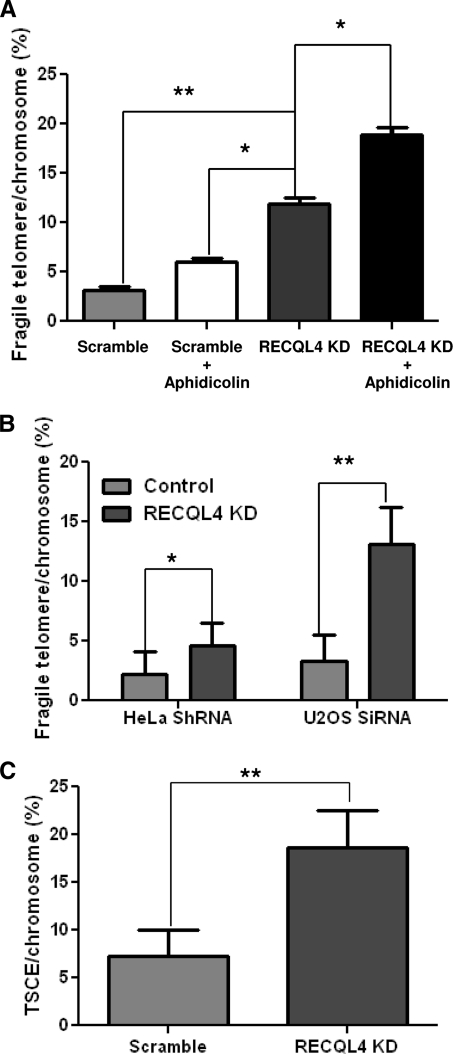FIGURE 4.
Telomeric abnormalities in RECQL4-depleted U2OS and HeLa cells. A, percent fragile telomeres/chromosome in scrambled, aphidicolin-treated scrambled, RECQL4 KD, and aphidicolin-treated RECQL4 KD U2OS cells. The differences in occurrence of the event between scrambled and RECQL4 KD U2OS cells (**, p = 0.002, n = 50), between aphidicolin-treated scrambled and RECQL4 KD U2OS cells (*, p = 0.01, n = 30), and between RECQL4 KD and aphidicolin-treated RECQL4 KD U2OS cells (*, p = 0.03, n = 50) are statistically significant. Error bars show the standard deviation from the average of three independent experiments. B, percent fragile telomeres/chromosome in scrambled and RECQL4-targeted shRNA HeLa cells and control and RECQL4-targeted siRNA U2OS cells. The differences in occurrence of the event between scrambled and RECQL4 KD HeLa cells (*, p = 0.02, n = 30) and control and RECQL4 KD U2OS cells (**, p = 0.001, n = 30) are statistically significant. Error bars represent the standard deviation from an average of three independent experiments. C, percent T-SCE/chromosome in scrambled and RECQL4-targeted shRNA (RECQL4 KD) U2OS cells. The differences in occurrence of the event between scrambled and RECQL4 KD cells are statistically significant (**, p = 0.002, n = 30). The error bars represent mean ± S.D. of three independent experiments.

